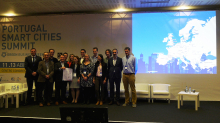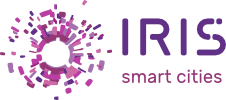
Clearly identified solutions with proven performance in Europes leading smart cities looking to boost urban environements and stimulate the marketplace for sustainable tech.
Representatives of twelve smart city ‘lighthouse’ projects, recipients of a combined investment of €263.84 million euro from the European Commission, met April 2018 in Lisbon, Portugal to sign a manifesto of cooperation. The agreement between cities aims to significantly change the smart city market place. The signature on 12 April was also a day of workshops where the 76 cities across Europe that are direct beneficiaries of these projects discussed their progress in enhancing energy efficiency, and collaborating with the private sector to create models for doing business that will perpetuate and multiply the effects of the EU’s investment.
In one such model, companies are actually fronting the money for green developments, asserting their social responsibility, and recouping investment from energy savings that accrue from more efficient systems. By fitting out old buildings with better insulation, solar panels, and management system that give residents more control over their energy use, cities can slash their CO2 outputs. The money saved then pays for the initial investment, plus an attractive return. Projects such as Sharing Cities, which pilot these and other business models create precedents which can be employed across Europe to benefit the economy, the cities and their citizens.
Just as shops buy food at one price and sell it at another, there are different price potentials for smart city solutions. ‘Packaging’ means agreeing on a set of standards, for example when building smart lampposts, that are sufficiently generic for one product, or model, to be employed in many cities – while still allowing for personalisation.
During one of the Lisbon workshops, cities worked to find the common ground upon which they could find easy-to-build solutions with a clear value proposition, at once component-based and interoperable at an affordable price. Packaging is a tool which cities can employ to cut costs so that residents can enjoy a better future with a lower price tag.
Through European funded projects, cities become laboratories where innovative ideas like this are tested, and when projects collaborate and share their results, effective solutions can be replicated, and common barriers identified and overcome.
Many cities wrestle with the dilemma of how to protect their heritage buildings while improving energy ratings, preserving cities’ historic beauty while expelling pollutants. A study visit to the town hall inspired city leaders with Lisbon’s example: a 150 year old historic building that has been fitted with 100 solar panels, insulated glass, a charging station for electric vehicles and a computerised sustainable energy management system hooked up to its LED lights.
Attendees at the workshops heard how the Royal Borough of Greenwich, which is the London demonstration area for the Sharing Cities project, had come up against heritage regulations that made it impossible to install solar panels in the World Heritage Site on the banks of the River Thames. The solution? Focus instead on renewable energy – a Water Source Heat Pump, using water from the River Thames basin – that will not change the outward appearance of the buildings and in fact take advantage of the resources of the Heritage Site. Innovative solutions like this are at the heart of smart cities, and by using EU funds to implement them, data from test cases provides proven results that convince other cities that change is possible.
They also heard how the city of San Sebastian, the demonstration area for the REPLICATE project, has gotten citizens on board with building retrofit by making sure that they are at the core of the sustainable energy implementations. Involving citizens from the beginning for improving the efficiency of buildings and giving them ICT tools to better understand their individual energy consumptions and providing solutions that help them to maximise their energy and economic savings, the city not only gets a greater insight into the needs that spring from citizens’ everyday reality, but can also ensure that the solutions developed are adapted to the individual needs of the citizens.
Milan has taken a similarly citizen-centric approach to retrofitting its old buildings, and was able to testify to the experience of San Sebastian that such an approach is worth the large effort that goes in to co-creation. The message was that solutions for residents can only be successful if they are designed together with residents – otherwise projects can meet with resistance which ends up being far more costly, or risk failing altogether.
By cross-referencing results and conclusions regarding the approach and execution of smart measures, cities boost each other’s potential for success. The demonstration and highlighting of new, tested practices encourages replication in other cities, and allows synergies between projects to emerge. When cities come together and share these results a lot of false starts and potholes that waste money and resources while slowing down the journey to a sustainable Europe can be avoided.
The manifesto therefore declared the commitment of lighthouse projects to identifying opportunities to enhance their impact through collaboration, acting to achieve synergies that will spread best practices and bring Europe closer to realising its climate commitments; to continue collaboration and consultation with businesses and citizens through their ‘ lighthouse’ collaboration and work together with the Smart Cities Information System and the European Innovation Partnership on Smart Cities and Communities; to develop tools and standards that can be exploited by cities outside the lighthouse projects, and by future projects.
The twelve ‘Horizon 2020 Smart Cities and Communities’ projects are:
- Remourban www.remourban.eu
- Triangulum www.triangulum-project.eu
- Growsmarter www.grow-smarter.eu
- SmartEnCity www.smartencity.eu
- Replicate www.replicate-project.eu
- Smarter Together www.smarter-together.eu
- SharingCities www.sharingcities.eu
- Ruggedised www.ruggedised.eu
- MySmartLife www.mysmartlife.eu
- IRIS www.irissmartcities.eu
- MAtchUp www.matchup-project.eu/
- Stardust www.matchup-project.eu/
Linked to these are:
- The EIP SCC, a major market changing undertaking supported by the European Commission which brings together cities, industries, SMEs, investors, researchers and other smart city actors, to develop business and procurement models and public private partnerships that create more value for all.
- The SCIS, a platform brings together project developers, cities, institutions, industry and experts from across Europe to exchange data, experience and know-how and to collaborate on the creation of smart cities and an energy-efficient urban environment.
26 Apr 2018

